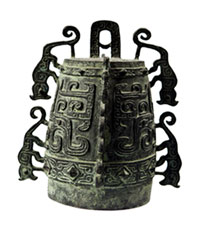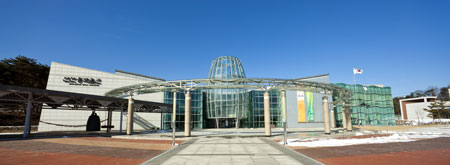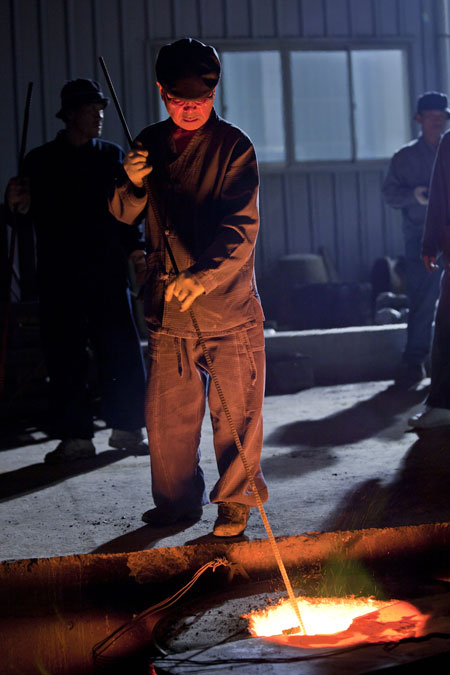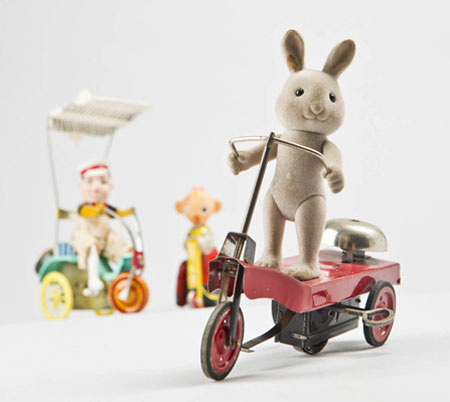Bells: echo of mystique
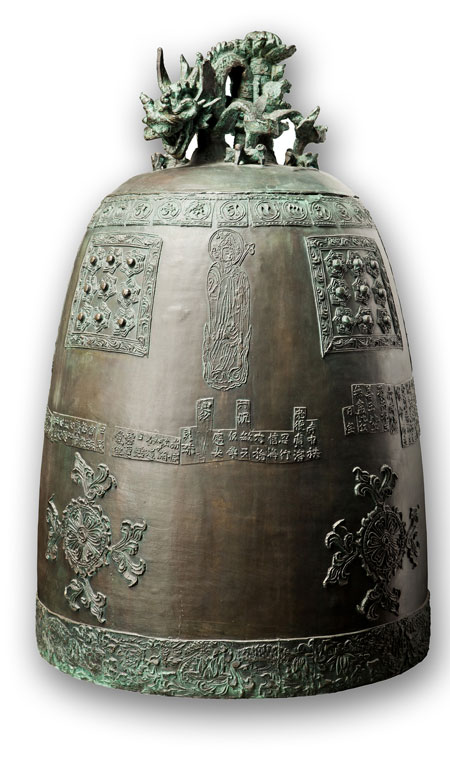
A replica of the Bell of Gimnyong Temple manufactured by Won Kwang-sik, (Photo : Jincheon Bell Museum)
Museum explores history, culture of bells
In the 1960s, an AFKN (American Forces Korea Network) announcer once praised the sound of a Korean temple bell, saying “Western bells are to be appreciated by the ears and Korean bells by the depth of the mind.”
Introducing this comment on a television variety show last year, professor and former Cultural Heritage Administration head You Hong-june said that Korean bells are specifically classed in a separate field for their acoustic uniqueness.
Korean bells are sounded by externally striking the surface of the bell with a hammer, different from Western bells that are sounded by an internal hammer known as a clapper.
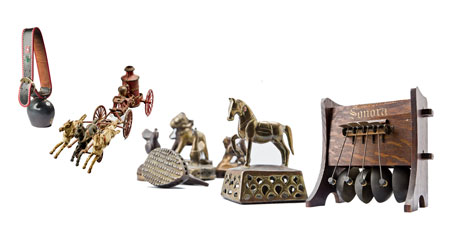
Various bells collected from around the world are on display at the “World Bell Collection: Bells in Our Lives” at the Jincheon Bell Museum through Oct. 6 next year.
The Jincheon Bell Museum in Jincheon, North Chungcheong Province, has shown the artistic value and elegance of Korean traditional bells since its inception in 2005.
As one of the historical sites where an ancient iron furnace was discovered for the first time in Korea, the museum is the only one in Korea which was built to promote the excellence and values of Korean bells.
The museum holds some 150 bells manufactured or collected by Won Kwang-sik, designated as Important Intangible Cultural Property No. 112, including some foreign ones.
The traditional bell maker has long been committed to recovering the elegance and beauty of the traditional bells, succeeding to reintroduce a beeswax casting method which was on the verge of disappearance since the colonial era in 1910-45. Born in 1942, Won has made or restored as many as 5,000 bells for over 50 years since the age of 17.
The collection ranges from bells cast in a traditional technique from the Unified Silla (668-935), Goryeo (918-1392) and Joseon (1392-1910) periods, and even modern times.
The museum has three exhibition halls. The first is dedicated to Won’s bells made using the beeswax casting technique, which shows Korean bell history at a glance. The Bell of King Seongdeok (National Treasure No. 29) with a full-scale replica surrounded by a big stand is seen in the first hall. The second shows how to make a temple bell from the Unified Silla periods and the various kinds of sound and patterns of the bells by country and period. The third one hosts various events and educational programs.
The museum also offers field experience programs for visitors. There are replicas of the Bell of Sangwon Temple (National Treasure No. 36) and the Bell of King Seongdeok, which visitors can strike to hear the sounds.
Also the museum opened the Jucheoljang (traditional bell maker) Inheritance Training Center in June to train apprentices and offer opportunities for visitors to watch the casting process.
Bells in history
Bells have a long history. They were widely used to sound the alarm, to call someone from a distance, as a time signal, in religious worship and as musical instruments. The materials they are made from vary from glass, metal and wood to ceramics according to cultures and periods. Western bells were usually used for practical purposes to call someone, for example, while Eastern bells were used for religious ceremonies, particularly shamanism.
Korean bells peaked when Buddhism began flourishing in the period of the Three Kingdoms (57 B.C.-668), forming originality in the structure and design, according to the museum. Among others, the bells cast between the 8th and 9th centuries are known to have the highest quality of artistry.
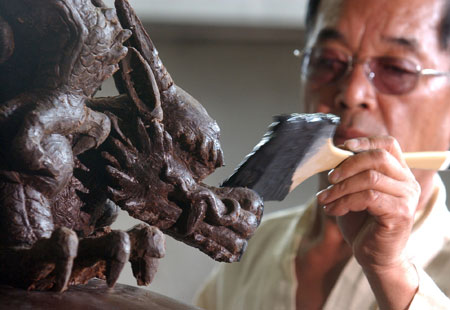
Won Kwang-sik, designated as Important Intangible Cultural Property No. 112, makes a bell using a traditional beeswax casting method. (Photo : Jincheon Bell Museum and Korea Times file)
The Bell of Sangwon Temple (National Treasure No. 36), the oldest one in the nation, is deemed the best work ever in terms of form, sound and design.
Won Bo-hyun, curator of the museum, said that visitors can see the uniqueness of Korean bells and compare them to Western bells and even those from neighboring countries China and Japan.
Korean bells have a circular area that provides a striking point and a sound pipe at the top, thus producing mystical, long-lingering echoes.
“Both Korean and Japanese bells were influenced by Chinese bells. But the patterns and designs became unique. Korean bells are hung very close to the ground while Japanese bells are hung very high. Thus Korean bells produce medium-pitched sounds with far-flung echoes while Japanese bells make high-pitched sounds and Chinese bells, low-pitched ones,” the curator said.
The Bell of King Seongdeok, better known as the Emille Bell after a legend about its casting, also proves the excellences of the ancient bells.
Only nine bells from the Unified Silla period remain today ― five in Korea and four in Japan. The bell maker has restored the ancient bells as the extant bells cannot be tolled due to decrepitude. The museum has six replicas which were cast by the bell maker in the traditional method of Unified Silla.
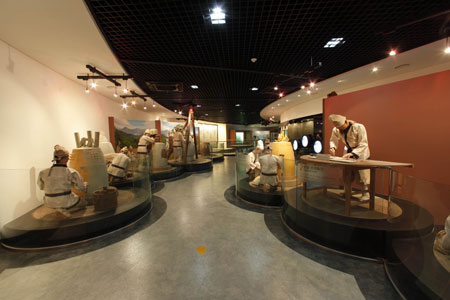
The Jincheon Bell Museum holds some 150 bells manufactured and collected by Won Kwang-sik along with some foreign ones. (Photo : Jincheon Bell Museum)
Ongoing exhibits
From a wind chime, a cowbell, a march bell and an altar bell to a scrub bell, all sorts of bells from the world are seen at the “World Bell Collection: Bells in Our Lives” at the museum through Oct. 6 next year.
Donated by Lee Jae-tae, a bell collector, some 8,000 kinds of bells collected from around the world for 20 years are on display.
The exhibition presents a bell embellished with flamboyant patterns and jewels installed on a bicycle used in Europe, a cowbell used in a traditional Korean rural village in the past, a hand bell, a march bell decorated with feathers and a phone bell used in the late 19th century and an altar bell along with an old toy bell and a scrub bell with various handles.
“The exhibition will show how the bells were used in accordance with history, culture and environment,” the curator said.
Also to mark the 7th year of the foundation, the museum is holding a special exhibition to feature the Bell of Sangwon Temple, the oldest one remaining in the nation, through March 31 next year. It will focus on stories related to the bell from its birth to its move from Andong, North Gyeongsang Province to the present site in Mt. Odae in Gangwon Province. The exhibition screens the records of the bell makers’ testimonies and relevant resources.
For more information, call (043) 539-3847, 3629 or visit www.jincheonbell.net. <The Korea TImes/Chung Ah-young>





















